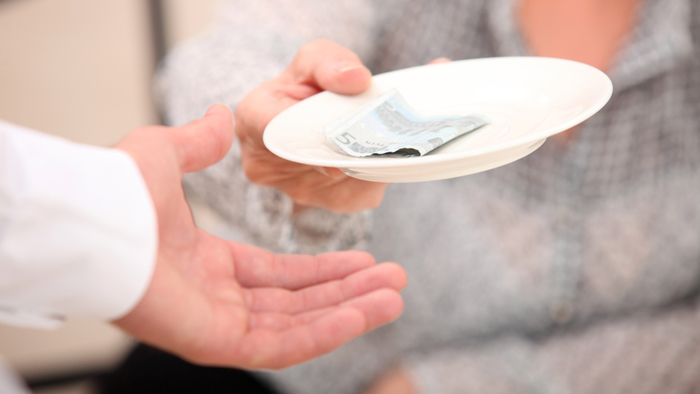
It’s time we asked the question: Who gets the money?
I’m referring to the money in the tip jar and the dollar amounts we write when tallying our restaurant tabs. Tipping can add a lot to the total bill, and people dining out, especially seniors on fixed incomes, need to plan ahead to include this part of the entertaining experience.
Whether the tip jar is next to the cash register in establishments that also sell fast food or in the opened guitar case of a street musician, the bills and coins accumulating belong to the owner of the establishment. Seems simple enough.
But, where tip money goes can be complicated.
Who gets the tip money in restaurants is often not as straightforward or as clearly indicated where multiple employees may be entitled to something extra for their service.
I never thought twice about where my gratuity went in places with wait staff. My $$$ went to the person who took my order and served the food, right?
Not so quick there, dedicated diner. We might need to do a little digging to confirm who gets what.
Have you heard about the growing practice of restaurant owners forcing wait staff to pool their tips or give a portion to management to ostensibly share with dish washers and other line staff? Tips on credit cards – by far the most prevalent method of tipping – cycle through the owner first and charges like the cost of breaking plates, glasses, etc., or the processing fees (generally 2 percent from the credit card company) are deducted from these tips instead of the main bill. Tips paid via credit card are usually added into a paycheck handed out only on payday. Cash tips, on the other hand, can go right into the pocket of servers and can be used immediately for groceries and other living expenses. But who carries cash anymore? Twenty percent of a $100 bill is a lot of cash to carry, which usually means a side trip to the ATM before the meal.
“A tip should be something left by a customer as a reward for good service – it should be no concern of the employer, who should be paying staff a decent wage for the work they do,” says Dave Turnbull, regional officer for the hospitality sector of the Unite Union. “The problem is that employers have come to consider tips and service charges as a revenue stream they can dip into at will in order to take a cut, or to divert a percentage away from waiting staff in order to subsidize low wages in the kitchen.”
Want to know who’s getting your tips? Can you find out?
Well, you can simply ask your waitress or waiter, “Who’ll get the tip we leave?”
But keep in mind, this question might put them on the spot. Some employers force employees to flat-out lie about who gets the money. And let’s face it, these generally underpaid employees don’t want to get into trouble or risk losing their jobs just to honestly answer your question, so tread lightly. Whether I outright ask depends on the rapport we’ve developed throughout the dining experience. Generally, I find honesty on my part works the best: “I was really pleased with your service, and I want to make sure YOU get that acknowledgment from me. That’s why I’m asking.”
You can also check in with any of your friends who work in the profession. You may get some great information about how they view the tipping issue.
A revolutionary approach to the tipping debacle that is catching on, at least in my neighborhood, is that of paying all restaurant staff a decent wage for the work they do and adjusting the prices charged accordingly, thereby doing away with tipping. This saves all the embarrassment of what or what not to do. I’m very open to this option.
In the end, which would you rather do with regard to making sure the wait staff gets their due: find out exactly where the money goes and tip separately from the bill or pay higher prices with no tipping allowed?
Note: A discussion of how much to tip is covered in an upcoming blog. It’s complicated and changing in lieu of who gets the tip. In the meantime, here is an interesting article that talks about tipping in the San Francisco Bay Area.


Thanks, Antonia, for this enlightening blog and the link to the SF article.
This tipping “thing” has always left me with an uncomfortable feeling about who and how much to tip. Two incidents in this last week has brought this subject full force. The first was at a spa and much to my surprise I was asked -at the front desk-in front of other customers, how much tip I would like added to my service. This before I received the service. The 2nd incident was at a restaurant and was exactly as you described.
I totally agree with the option to do away with the tipping and charge a higher price. I would love to know the establishments who have already put this into practice.
Being asked to state your tip in front of others BEFORE having received the service? Incredible!
Thanks for sharing, Fran.